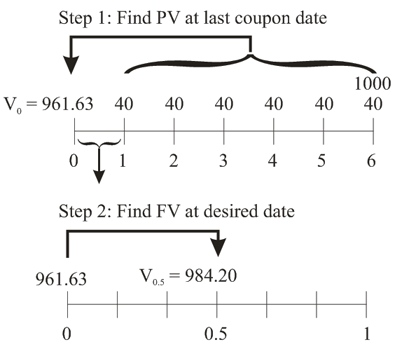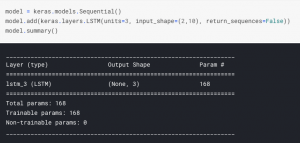
However, in practice there exist differences between the two balances and we need to identify the underlying reasons for such differences. Your bank may collect interest and dividends on your behalf and credit such an amount to your bank account. The bank will debit your business account only when the bank pays these issued cheques. This is also known as unfavorable balance as per the cash book or unfavorable balance as per the passbook.
Want More Helpful Articles About Running a Business?
To quickly identify and address errors, reconciling bank statements should be done by companies or individuals at least monthly. They also can be done as frequently as statements are generated, such as daily or weekly. Non-sufficient funds (NSF) checks are recorded as an adjusted book-balance line item on the bank reconciliation statement. Bank reconciliation statements ensure that payments were processed and cash collections were deposited into the bank. Bank reconciliation statements are often used to catch simple errors, duplications, and accidental discrepancies. Some mistakes could adversely affect financial reporting and tax reporting.

What is your current financial priority?
You need to adjust the closing balance of your bank statement in order to showcase the correct amount of withdrawals or the cheques issued but not yet presented for payment. Such errors are committed while recording the transactions in the cash book. As a result, the balance as per the cash book differs from the passbook. At times, the balance as per the cash depreciation rate book and passbook may differ due to an error committed by either bank or an error in the cash book of your company. Thus, such a situation leads to the difference between bank balance as per the cash book and balance as per the passbook. However, there may be a situation where the bank credits your business account only when the cheques are actually realised.

Bank reconciliation table of contents
The change to the balance in your bank account will happen “naturally”—once the bank processes the outstanding transactions. We’ll go over each step of the bank reconciliation process in more detail, but first—are your books up to date? If you’ve fallen behind on your bookkeeping, use our catch up bookkeeping guide to get back on track (or hire us to do your catch up bookkeeping for you). To reconcile a bank statement, the account balance as reported by the bank is compared to the general ledger of a business.
Reduced human errors
- Keeping your financial records in order is hugely important to the success of your business.
- Standardizing the process with a set of steps to follow for reconciliation can make the process more organized and save time.
- Compare each bank transaction to the corresponding transaction as recorded in your general ledger, ensuring the documents match.
Businesses that use online banking service can download the bank statements for the regular reconciliation process rather than having to manually enter the information. A bank reconciliation statement is prepared by a depositor (account holder) to overcome differences in the balances of the cash book and bank statement. Remember that transactions that aren’t accounted for in your bank statement won’t be as obvious as bank-only transactions. This is where your accounting software can help you reconcile and keep track of outstanding checks and deposits.
This allows the company to verify its checking account balance more frequently and to make any necessary corrections much sooner. A https://www.simple-accounting.org/ is a financial document that summarizes your bank account transactions and internally recorded transactions, showing that the two records match. You don’t necessarily have to create a bank reconciliation statement every time you reconcile your accounts—if you perform bank reconciliation every day, you probably shouldn’t. Otherwise, though, statements are a good way to stay on top of your business’s finances.
These transactions include interest income, bank deposits, and bank fees. In your ledger balance, be sure to account for deposits that have yet to clear, as well as checks you’ve written that have yet to be cleared by the bank. The end result is the adjusted cash balance, which ensures your ledger balance matches the bank statement balance. If you’re using accounting software, it may give you the option to connect your bank account so transactions are automatically downloaded and categorized. This can save you some time, although it’s important to periodically check everything manually to ensure its accuracy and that there are no bank errors.
It’s common for your bank statement to have a higher ending balance than your G/L account shows. While it may be tempting to assume you have more money in the bank than you think, it’s a safe bet that the difference is checks and other payments made that have not yet hit the bank. A liability account on the books of a company receiving cash in advance of delivering goods or services to the customer. The entry on the books of the company at the time the money is received in advance is a debit to Cash and a credit to Customer Deposits.
When the bank debits a depositor’s checking account, the depositor’s checking account balance and the bank’s liability to the customer/depositor are decreased. As you know, the balances in asset accounts are increased with a debit entry. Bank reconciliation ensures your business’s internal financial records accurately reflect your cash flow. With bank reconciliation, you and your stakeholders can make decisions based on your bank records and financial statements, understanding both are accurate. For one thing, it helps you catch financial mistakes before they become bigger problems.
Compare your personal transaction records to your most recent bank statement. First, make sure that all of the deposits listed on your https://www.accountingcoaching.online/average-collection-period-formula-calculator/ bank statement are recorded in your personal record. If not, add the missing deposits to your records and your total account balance.
Adjust your records to match the bank statement, considering deposits, withdrawals, fees, and errors. Hopefully, once you’ve dealt with deposits in transit, outstanding checks, interest payments, and bank fees, your bank statement and internal accounting records will match. Resolving the issue could mean paying a bill, depositing a check, or entering a forgotten transaction into your general ledger.
